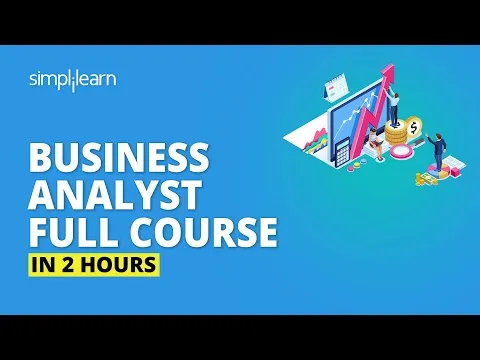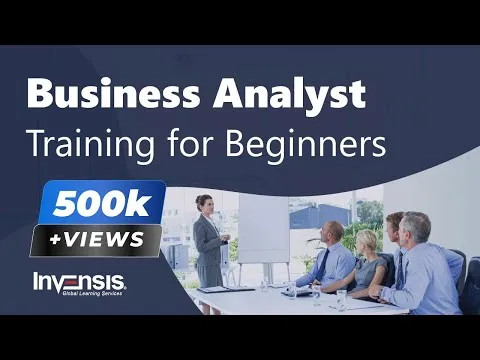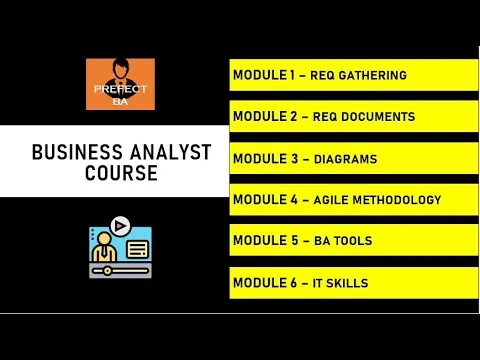
Introduction to Business Analytics - Crash Course for Beginner 
This course is designed to provide a crash course in business analytics for beginners. It covers topics such as selecting, filtering, and sorting data; using business analytics formulas; unions and joins; aggregation; crosstabs and transposing; contingency tables; measures of distribution and variation; distribution visualization; normal distribution; kurtosis and asymmetrical distribution; sampling basics; bivariate data and correlation; information theory and entropy; analytical reports; automation and regression. By the end of the course, students will have a better understanding of the fundamentals of business analytics and be able to apply them to their own projects. ▼
ADVERTISEMENT
Course Feature
![]() Cost:
Cost:
Free
![]() Provider:
Provider:
Youtube
![]() Certificate:
Certificate:
Paid Certification
![]() Language:
Language:
English
![]() Start Date:
Start Date:
Self Paced
Course Overview
❗The content presented here is sourced directly from Youtube platform. For comprehensive course details, including enrollment information, simply click on the 'Go to class' link on our website.
Updated in [May 17th, 2023]
This course provides an introduction to business analytics for beginners. It covers topics such as selecting, filtering, and sorting; business analytics formulas; unions and joins; aggregation; crosstabs and transposing; contingency table; measures of distribution; measures of variation; distribution visualization; normal distribution; kurtosis and asymmetrical distribution; sampling basics; bivariate data and correlation; information theory and entropy; analytical reports; automation and regression.
Participants will learn how to select, filter, and sort data to identify patterns and trends. They will also learn how to use business analytics formulas to analyze data and create reports. Additionally, they will learn how to use unions and joins to combine data from multiple sources, as well as how to use aggregation to summarize data.
The course will also cover crosstabs and transposing, contingency table, measures of distribution, measures of variation, and distribution visualization. Participants will learn how to use normal distribution, kurtosis, and asymmetrical distribution to analyze data. They will also learn about sampling basics, bivariate data, correlation, information theory, and entropy.
Finally, participants will learn how to create analytical reports and automate processes using regression. By the end of the course, participants will have a comprehensive understanding of business analytics and be able to use the techniques they have learned to analyze data and create reports.
[Applications]
After completing this course, learners can apply their knowledge of business analytics to their own projects. They can use the techniques they have learned to select, filter, and sort data, as well as to create formulas, unions, joins, aggregations, crosstabs, transposing, contingency tables, measures of distribution, measures of variation, distribution visualizations, normal distributions, kurtosis and asymmetrical distributions, sampling basics, bivariate data and correlation, information theory and entropy, analytical reports, and automation and regression. They can also use their knowledge to create automated reports and to analyze data for their own projects.
[Career Paths]
1. Business Analyst: Business Analysts are responsible for analyzing data and developing insights to help inform business decisions. They use a variety of tools and techniques to identify trends, develop strategies, and optimize processes. The role is becoming increasingly important as organizations look to leverage data to gain a competitive edge.
2. Data Scientist: Data Scientists are responsible for collecting, analyzing, and interpreting large amounts of data. They use a variety of techniques to uncover patterns and insights that can be used to inform decisions. Data Scientists are in high demand as organizations look to leverage data to gain a competitive edge.
3. Data Engineer: Data Engineers are responsible for designing, building, and maintaining data pipelines. They use a variety of tools and techniques to ensure data is collected, stored, and processed efficiently. As organizations look to leverage data to gain a competitive edge, the role of the Data Engineer is becoming increasingly important.
4. Machine Learning Engineer: Machine Learning Engineers are responsible for developing and deploying machine learning models. They use a variety of techniques to build models that can be used to make predictions and automate processes. As organizations look to leverage data to gain a competitive edge, the role of the Machine Learning Engineer is becoming increasingly important.
[Education Paths]
1. Bachelor of Science in Business Analytics: This degree program provides students with the skills and knowledge to analyze data and make informed decisions. Students learn how to use data to identify trends, develop strategies, and optimize operations. They also learn how to use data to create predictive models and develop insights. This degree is becoming increasingly popular as businesses become more data-driven.
2. Master of Science in Business Analytics: This degree program provides students with advanced skills and knowledge in data analysis and decision-making. Students learn how to use data to develop strategies, optimize operations, and create predictive models. They also learn how to use data to identify trends, develop insights, and create analytical reports. This degree is becoming increasingly popular as businesses become more data-driven.
3. Doctor of Philosophy in Business Analytics: This degree program provides students with the highest level of skills and knowledge in data analysis and decision-making. Students learn how to use data to develop strategies, optimize operations, and create predictive models. They also learn how to use data to identify trends, develop insights, and create analytical reports. This degree is becoming increasingly popular as businesses become more data-driven.
4. Certificate in Business Analytics: This certificate program provides students with the skills and knowledge to analyze data and make informed decisions. Students learn how to use data to identify trends, develop strategies, and optimize operations. They also learn how to use data to create predictive models and develop insights. This certificate is becoming increasingly popular as businesses become more data-driven.
Course Provider

Provider Youtube's Stats at AZClass
Discussion and Reviews
0.0 (Based on 0 reviews)
Explore Similar Online Courses

Data Visualization Online Course

Data Science on Sustainable Development Goals (SDGs)

Python for Informatics: Exploring Information

Social Network Analysis

Introduction to Systematic Review and Meta-Analysis

The Analytics Edge

DCO042 - Python For Informatics

Causal Diagrams: Draw Your Assumptions Before Your Conclusions

Whole genome sequencing of bacterial genomes - tools and applications

Business Analyst Full Course In 2 Hours Business Analyst Training For Beginners Simplilearn

Business Analyst Training for Beginners Business Analysis Tutorial Invensis Learning

Business Analyst Course in 6 Hours Business Analyst Training For Beginners
 Related Categories
Related Categories
 Popular Providers
Popular Providers
Quiz
 Submitted Sucessfully
Submitted Sucessfully
1. What is the main purpose of business analytics?
2. What is the purpose of a contingency table?
3. What is the purpose of measures of distribution?
4. What is the purpose of business analytics?
Correct Answer: To gain insights from data.


Start your review of Introduction to Business Analytics - Crash Course for Beginner